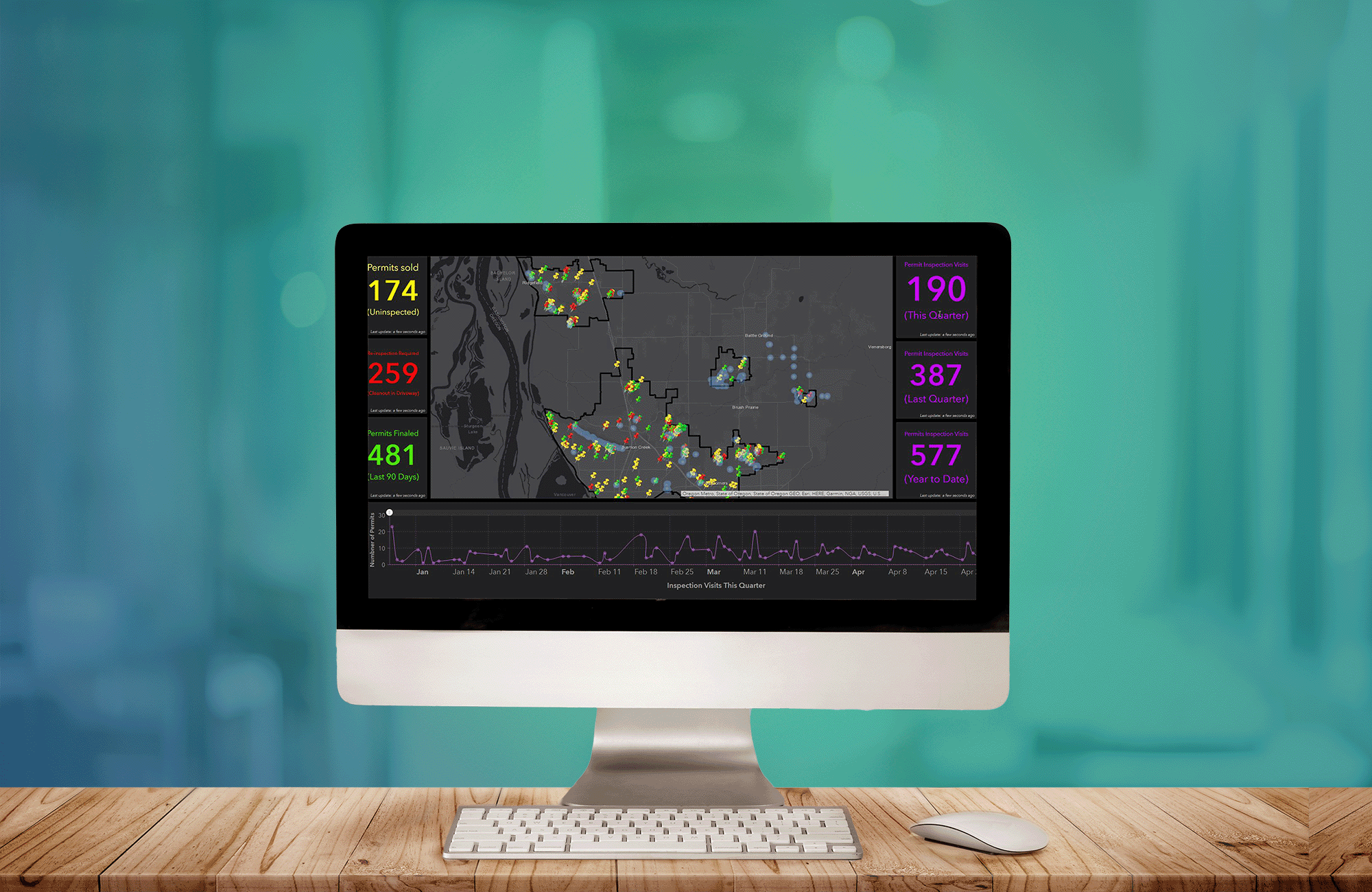
Electronic Field Forms Solve Asset Management Workflow Challenges
Client Name
Related Service
Related Sector
Clark Regional Wastewater District, one of the largest sewer districts in Washington State, provides wastewater services to approximately 100,000 people in Clark County. According to CRWWD, its customer base has nearly doubled in the past 20 years and continues to increase rapidly, requiring CRWWD to manage hundreds of requests to connect new single-family homes to wastewater infrastructure every year, on top of other development projects.
To keep up with growth, CRWWD needed a better system for tracking wastewater connection site inspections. Previously, CRWWD’s Engineering Department and field service technicians relied on a number of inefficient processes to manage the important paper records and inspection documents created each day by field staff. Completing and tracking paper records took too much time, and with no centralized way to track a document’s location or status, staff were not able to easily share information, leading to even more inefficiencies and accidental data duplication. CRWWD staff needed a way to quickly see the status of documents and create reports for streamlined internal communication and project management.
Electronic field forms were the solution. After conducting a needs assessment that identified Flowfinity as the best electronic field forms vendor, FLO worked with CRWWD on everything from establishing appropriate technical conditions with CRWWD’s IT team, to installing and configuring Flowfinity, to developing the forms in partnership with field crews, to conducting extensive testing and training.
CRWWD fieldwork is now recorded on mobile apps, enhancing site inspection documentation in the field and making the transfer of site information much more efficient. According to FLO’s calculations, CRWWD saved 373 hours of labor in the first year after the implementation of electronic field forms, primarily in data entry and recordkeeping. The increases in efficiency allowed CRWWD to hit a 160 percent return on investment within the first few years of use. The field users love the new system, too – as it saves them from having to reenter data or go back to the office to finalize a report.
Now that CRWWD relies on electronic field forms instead of paper records, they have realized a number of benefits, including;
- Data are visible in the office as soon as it’s submitted from the field.
When data are sent from the field to the office in real-time, management gets insight into field activities as they happen. All the submitted data are stored in a central database that’s automatically created and backed up and remotely accessible from smartphones, tablets, and Web browsers. - More efficient communication and workflow management.
Automatic e-mail notifications and custom workflows mean that project managers are notified immediately when fieldwork is complete and can quickly access and review the collected field data. Daily summary reports are automatically generated to track progress effectively and efficiently. Contractors can automatically get a breakdown of punch list items emailed to them as soon as the inspector submits their report. - Tracking is linked to location.
Flowfinity can be integrated with GIS, so information collected with the electronic field forms now automatically connects with the appropriate location in the field. Now, any employee can quickly access detailed maps showing where information was gathered, what infrastructure was assessed, etc. Any changes are instantly updated across all mobile forms and GIS maps that display the data.
Learn More
Contact Us!
Thank you for your interest in FLO! Whether you are looking to inquire about a project or are interested in learning more about our services, please reach out to the FLO team!
